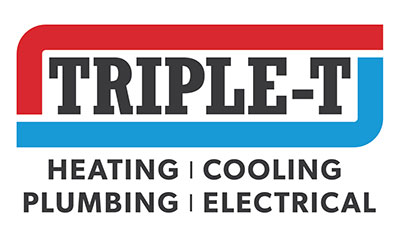What type of Air Conditioning System is Best for your home?
You need air conditioning in your home. That goes without saying, but what do you need to consider to make the right decision? There are so many sizes and types of air conditioning systems! In this article, we’ll try to give you the information you need to get the best system, one that suits your family’s home and lifestyle.
There are several types of air conditioners:
Central Air Conditioners
This type of system delivers heating and cooling throughout the entire home via a system of ducts and is the most common type of system for homes and apartments. In fact, more than half of the homes in the United States have central heating and air.
The system consists of a compressor and condenser installed outside the home and an air handler on the inside which pushes warm or cool air through the ductwork. The condenser/compressor unit is usually set up on a concrete pad beside the home but can sometimes be installed on the roof. This type of system can be set up to cool the entire home at the same temperature. If desired, a zoned system can be installed, which would allow you to cool or heat different parts of the home at different temperatures.
Ductless Split System Air Conditioners
The ductless split system, sometime know as a mini split, is similar to central air conditioning, in that it has some of the same components. Here again, the compressor is installed outdoors, but separate air handlers are installed indoors. Split systems can save on energy costs because no cooling heating is lost through the ductwork
Window Air Conditioners
We’ve all seen window air conditioners. These air conditioners have the same components as a central system, but they’re all contained in one unit, and these units slide into a window mount. They come in a wide variety of sizes, adequate for a single room or even a small home. They are generally inexpensive compared to a whole house system, but their cooling capacity is limited.
Heat Pumps
A heat pump is part of a home heating and cooling system and is installed outside your home. Like an air conditioner such as central air, it can cool your home, but it’s also capable of heating your home in the winter. Basically, a heat pump pulls the heat from the outside air into your home in the winter to warm it. Even in chilly weather, the heat pump can still pull a bit of heat from the air. In extremely cold weather the heat pump may be supplemented by an electric heater installed with the air handler.
In the summer, the heat pump pulls heat from the inside to cool your home. The heat pump uses refrigerant to provide indoor comfort year round. Because they provide heating and cooling, there’s no need to install separate systems in the home.
Portable Air Conditioning Units
This type of unit is similar to a window unit air conditioner and only designed to cool one room. This unit has the same components as a window air conditioner but will have flexible duct hoses that are vented through a window. The biggest advantage of these units is the flexibility of moving easily from one room to another.
Package Terminal Air Conditioners
This is the type of system you usually see in hotel rooms, medical facilities, apartments, and assisted living facilities. These systems are usually set up to provide air conditioning or heat to just one room. They’re usually installed just above the floor on an outside wall, they have no ductwork, and they send cool air into the room while sending the warm air outside.
How to Choose the Right Size
There are many considerations regarding the size of the system you need. Size for a heating and cooling system air conditioner, heat pump, or furnace, isn’t about the dimensions of the unit or the square footage of your living space – here, size means heating or cooling capacity, which is the unit’s ability to add or remove heat for heated air or cooled air. Cooling capacity is measured in British Thermal Units (BTUs). BTU is a unit of measurement that shows just how much energy your air conditioner uses to remove heat from your home within an hour. It’s a complicated equation, and a qualified HVAC contractor will use many different aspects of your living space to determine the optimum BTU requirement.
Thermostats
If you select a central air conditioning system, it will be controlled by one thermostat for the entire home. Based on the latest technology, you should select a programmable thermostat. This type of thermostat can be set to deliver the right amount of cooling at the right time. Many of these can be programmed from your tablet or smart phone for added convenience.
Insulation
Having the proper amount of insulation in your home is critical for the efficient operation of your air conditioning system. The effectiveness of insulation is expressed as an R-Value. The higher the R-Value, the better the performance of the insulation. The recommended level for most attics is to insulate to an R -Value of R-38. This will require from 10-14 inches of insulation, depending on which type of insulation you use.
Choosing an air conditioning system that’s best for your particular situation is a complicated matter and you’ll need expert advice to make the right decision. For assistance with this decision or any other air conditioning or heating needs, contact the experts at Triple T Plumbing, Heating and Air.
Established in 1974, we are a family-owned and operated business dedicated to serving our community in the area of heating and air conditioning, air quality services, and plumbing. With a commitment to customer satisfaction and over 40 years of hands-on experience, our team can be trusted with virtually any service challenge. Visit our website, or contact us at 801-307-4835 in Utah County or 435-258-9864 in Washington County.


